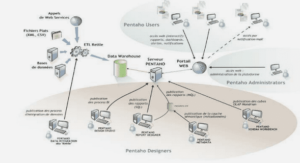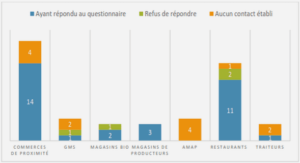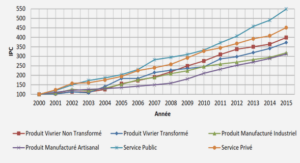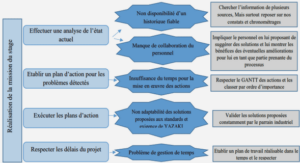GOUVERNANCE DU SECTEUR MINIER
GOVERNANCE, HUMAN RIGHTS AND MINING IN THE DEMOCRATIC REPUBLIC OF CONGO
Introduction
In view of its geostrategic importance, the Democratie Republic of Congo (DRC) conditions the stability and development of central Africa and of the Great Lakes region more generally. Moreover, the UN considers that over the last decade, this area has been the most unstable part of the world, with its epicentre in east DRC (Biliaminou, 2007). In March 2007, the Security Council underlined the importance of the exploitation of natural resources as a major destabilising factor. Indeed, conflicts have overthrown several States in the area, leading to hannful consequences with regard to the situation of human rights (Eurac, 2007), especially in border areas. Illegal exploitation of natural resources has increased, supporting and maintaining these conflicts.
With a vast territory of almost 2,400,000 km2 , abundant and varied natural resources (wood, minerais, water, fauna, flora, etc.), sharing borders with nine other countries, the DRC represents the ‘heart’ of central Africa. It is also its ‘soft underbel1y’. Recognised as possessing exceptional minerai diversity and in substantial quantities, the DRC is thought to conceal most probably 50 per cent of the world’s cobalt reserves, 10 per cent of its copper deposits, 30 per cent of its diamonds, as weil as having an important potential for gold, uranium and manganese (Hocquard, 2006). The DRC is today the world’s leading cobalt producer. The national economy has been based historically on the exploitation of minerai resources. The mining industry flourished under Belgian colonization and later under the Mobutu regime. In the 1980s, the country provided 6 per cent of world copper production (Drew Hasselback, 2007) and the mining sector alone ensured approximately 60 per cent of the State’s tax receipts (Karsenty, 2006). In the 1970s and 1980s, Gecamines – the State mining company – represented on average more than 60 per cent of export income (Extractive Industries Review Reports (EIR), 2003a).
Although activity in the Congolese rnining industry has slowed down after the 1980s, it has an enorrnous potential on which the rnajority of econornic and political actors count to revive econornic growth and the social developrnent. The ‘geological scandal,64 which is the way certain analysts have characterised the DRC is however also the archetype of what sorne have described as ‘the curse of raw rnaterials’ (Neary et van Wijnbergen, 1987). No other country in Africa presents such an extrerne cornbination of potentialities and problerns. The conflicts that have succeeded each other since independence in 1960 reveal how difficult nationbuilding can be (Lanotte, 2004). 64 Believed to be an expression of Cecil Rhodes, founder, in 1880, of the South African company De Beers. Indeed, the mining resources of the Great Lakes Region have been the prey of countless parties (Martineau et Boulanger, 2006). During the last decades, tensions have increased as a result of the grab for raw materials and mining revenues. With the centre of power located in the West of the country and mining resources located mainly at the peripheries, the potential for dissension has been multiplied. This dichotomy creates certain tensions, and in particular on the eastem borders where the State can only count on very weak representation. The 1960-1965 civil war, the Katangese conflicts later on (1978), the secessionist or centrifugal armed uprising, as weil as the more recent conflicts (1996-1998, 1998-2002, 2007-2008) – ail of these events have scarred the history of a country where the economlC and social system has always been structured around
revenues from mining. These resources are the main reason for the 42 years of dictatorship, for the 15 years of political transition, and the 7 years of armed national and international conflicts. Between 1998 and 2004, the death-toll throughout the whole territory65, ail nationalities confounded, has been estimated at 4 million (Coghlan et al., 2006). More than 3.4 million inhabitants were displaced, including 411 ,000 to neighbouring countries, and 17 million people still suffer from food shortages. Added to this there are also the pandemics, acts of physical and psychological violence, raping, executions, etc. The majority of victims are civilians, far from the battlefields, ‘collateral casualties’ due to the degradation of basic infrastructure, lack of public services, shortages in food supplies, proliferation of diseases, etc.
In keeping with the third major area of recommendations identified by the BIR as enabling conditions in order for the extractive industries to contribute to poverty alleviation through sustainable development, and needed to be met by the World Bank Group in arder for it to play a positive role, the analysis of this chapter will focus on the relations between mining activities and the respect for human rights. It takes as its point of departure the World Bank’s observation: « Many countries fail to make best use of the benefit streams provided by the extractive industries. Unfortunately, the Democratic Republic of Congo is among these countries »(World Bank, 2007c). Within this framework, the chapter will examine the reforrns undertaken in the mining sector and their implications for promoting or on the contrary impeding the respect of human rights. The DRC provides a striking illustration of the complexity of the stakes raised by the issue of human rights, which is increasingly considered as one of the main ‘development’ issues ofcountries of the South.
65 This expression simplifies reality, the human consequences of conflicts must be considered in their regional dimension. Many Rwandese refugees, for example, died on Congolese terri tory.
In countries with fragile institutions, the mining sector is recognised by many to have produced more misery than wealth for local populations. It has been shown in this regard that countries rich in natural resources may be characterised by worse economic performances than less endowed countries. No consensus has yet emerged to explain such an apparent paradox (Collier et Hoeffler, 2005; Ross, 1999) and this malU1er of approaching such issues is itself the subject of debate. However, twelve of the States that are most dependent on mining production and six that depend on petroleum are c1assified by the World Bank as ‘Heavily Indebted Poor Countries’ (HIPC) and have among the worst ratings on the Human Oevelopment Index (HOI), according to data compiled by the United Nations Oevelopment Programme (Banque mondiale, 2003b). In such a context, given its mandate to ‘fight against poverty’, the World Bank Group (WBG) has proposed transforrning the mining sector into a macro-economic lever for growth and development, in order to enable the DRC to achieve the ‘Millennium Development Goals’ (MDG) (République démocratique du Congo et UN, 2004, p. 13).
In the DRC, as in many African countries, the reform measures strongly encouraged by the International Financial Institutions (IFIs) have emphasized an overall redefinition of the architecture and role of the State (Mazalto, 2005c). Such a strategy and the risks which it represented can be illustrated by that adopted by the same institutions a few years earlier (in 2000) in Chad, where under different circumstances an attempt was made to use oil revenues in order to reinforce a weak State (Magrin, 2003; Tulipe, 2004). In the DRC mining sector, these reforms have led to creating a new legal framework and a new set of standards aimed at improving practices as a means to achieve development objectives. While, on the one hand, these reforms provide a legal framework
for rights, on the other hand, they are often the vehic1e for a heavily technical approach that tends, in the name of promoting ‘good governance’, to deny the political dimensions of the socio-economic considerations associated with the management of this sector. Encouraged, conceived and most often implemented from abroad and/or with the strong participation of international experts, the very origin of these reforrns creates problems of the legitimacy of their application and appropriation by the national and local authorities.
Moreover, and as was illustrated in the first two chapters of this volume, the ‘model of development’ based on resource extraction that is promoted, presents a number of difficulties in terms of the national redistribution and the local appropriation of the wealth produced. Moreover, insofar as human rights are best promoted through the implementation of equitable wealth distribution mechanisms and, since this requires the existence of legitimate institutions established throughout the whole territory, the links between the reforms put forward to promote mining activities and their implications for the respect of human right merit detailed analyses. Furthermore, in the DRC, the institutional reforms currently being undertaken in the name of promoting ‘govemance’, with the goal of introducing the mIe of law, raise a number of questions which still remain to be answered. In the present chapter we attempt to provide certain elements towards an understanding of these issues. It was in response to grave concems raised conceming the 1ack of impact of mining activities on poverty reduction and notably in the face of criticism of its own involvement that the World Bank Group (WBG) became involved in this area. As noted, among other initiatives but of central importance, the WBG commissioned the Extractive Industries Review in order to help revise the institution’s practices in the sector (Extractive Industries Review Reports (EIR), 2003a, 2003b). The central place given to the respect for human rights in its recommendations by the EIR initiative has been a factor contributing to the emergence of the human rights agenda as an essential component in order for investments to contribute to the objectives of programmes to ‘fight against poverty’. While the setting up of the EIR was indeed a commendable initiative by the IFIs to monitor their practices in the extractive sector, the major contribution of the report which resulted lies in proposing concrete solutions to the problems identified. In this context, one cannot help but draw attention to the gap which exists, on the one hand, between the diagnosis and the EIR recommendations, and, on the other hand, the low priority assigned to them by the WBG in its subsequent practices.
|
Table des matières
LISTE DES FIGURES ET TABLEAUX
LISTE DES ABRÉVIATIONS, SIGLES ET ACRONYMES
RÉSUMÉ
ABSTRACT
INTRODUCTION Partie 1 PROBLÉMATIQUE ET CADRE D’ANALYSE: ENJEUX DES « GOUVERNANCES» 1.1 PRESENTATION DE L’OBJET DE THESE : PROBLÉMATIQUE ET CADRE D’ANALySE Partie II 115 ARTICLES ET CHAPITRES DE LIVRES lU ARTICLE 1 – LA RÉFORME DES LÉGISLATIONS MINIÈRES EN AFRlQUE ET LE RÔLE DES INSTITUTIONS FINANCIÈRES INTERNATIONALES: LA RÉPUBLIQUE DÉMOCRATIQUE DU CONGO
CONCLUSION
APPENDICE A METHODOLOGIE
APPENDICE B SCHEMAS COMPLEMENTAIRES DE L’ARTICLE
APPENDICE C Guide d’utilisation « comment appréhender un code minier»
APPENDICE 0 Témoignage sur l’Union Minière du Haut-Katanga
APPENDICE E Extrait du Journal de terrain
BIBLIOGRAPHIE
BIBLIOGRAPHIE INDICATIVE
![]() Télécharger le rapport complet
Télécharger le rapport complet




